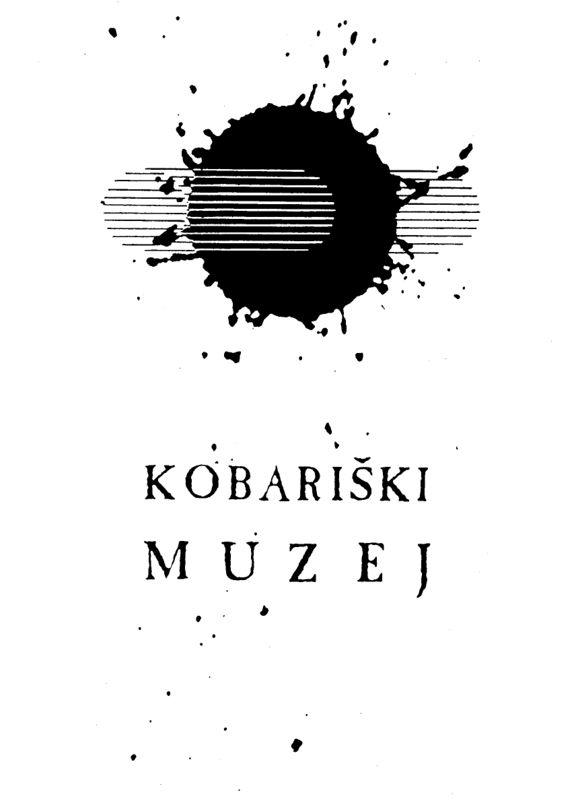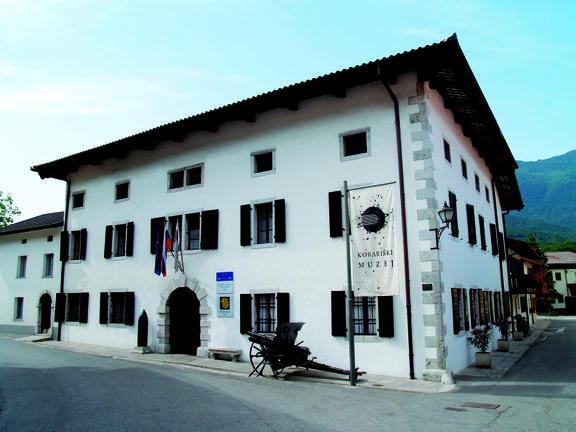URIs of the form "info@kobariski-muzej.si, kobariski.muzej@siol.net" are not allowed.
Difference between revisions of "Kobarid Museum"
(imported from XML by extractor/importer) |
(imported from XML by extractor/importer) |
||
| Line 41: | Line 41: | ||
The museum upgraded its multimedia equipment in 2005, acquiring new archives and making a new documentary about the museum to mark the 90th anniversary of the beginning of this bloody World War I battleground. | The museum upgraded its multimedia equipment in 2005, acquiring new archives and making a new documentary about the museum to mark the 90th anniversary of the beginning of this bloody World War I battleground. | ||
| − | |||
[[Category:Museums]] | [[Category:Museums]] | ||
Revision as of 00:03, 18 November 2009
-
13 May 2024
"Around The Paths of Peace: In Search of Traces of War 1915-118" is an event about connections between trenches still visible in the territory between Switzerland and Adriatic Sea. The debate with historians from Austria and Hungary and a representative of Italy will include two Slovenian speakers, Maša Klavora from Walk of Peace in the Soča Region Foundation, and Martin Šolar from Kobarid Museum. Austrian historian Peter Schubert, PhD, will also be presenting two of his books. Organised in collaboration with Collegium Hungaricum, Kral Verlag, Walk of Peace in the Soča Region Foundation, Kobarid Museum, Verein Dolomitenfreunde – Friedenswege Österreich and Promo Turismo FVG Cervignano del Friuli.
-
7 Nov 2017
The Aspects of the Isonzo Battles 1915-17, a lecture by Jože Šerbec, Kobarid Museum, supported by the Consulate General of the Republic of Slovenia Munich,
-
to
14 Jun 2016
14 Jul 2016
World War I: Sons of Russia in the Slovenian Alps, an exhibition organised in cooperation with the Kobarid Museum and the Embassy of the Republic of Slovenia Moscow,
Established in 1990 at Kobarid (called Karfreit when part of the Austro-Hungarian empire, and Caporetto under the Italians), a Slovene town near the Italian border, the Museum won the prestigious Council of Europe Museum Prize in 1993.
Accommodated in a renovated house in the town's main square which once housed an Italian military court, the museum displays an amazing collection of military equipment, photographs and personal belongings of soldiers fighting at the front.
The entrance foyer symbolically introduces visitors to the theme of the permanent exhibitions with maps that present Europe's World War I battlefields and the reshaped political borders at the end of the war, with flags, portraits of soldiers of many nationalities and gravestones from the military cemeteries in the Upper Soča Valley region. Because of its location at the junction of the Soča and Nadiža valleys that link Friulia and Carinthia, Kobarid was the scene of numerous invasions and wars, the most ferocious one being during the First World War.
The Krn Room presents the initial assaults along the Soča River after Italy's entry into the war in 1915. Italian alpine troops achieved the first major victory on the Soča Front with the capture of Mount Krn, when in June 1915 they wrested this 2,245 metre peak from the hands of its Hungarian defenders. The central exhibit of this room is the 1:1000 scale model of Mount Krn, Mount Batognica and neighbouring peaks. Many visitors study the model carefully before taking the tour of this highest part of the former battlefield, or alternatively upon their return from the unforgettable open-air museum.
The White Room tells of the suffering of the soldiers in the cruel environment of the karst mountains during winters with six and sometimes more metres of snow.
The Hinterland Room illustrates how the area behind the lines of the Soča Front became a genuine anthill of hundreds of thousands of soldiers and workers scattered from Mount Rombon to the shores of the Bay of Trieste.
The story of the 29 months of fighting for positions along the Soča River concludes in the Black Room, where photos, crucifixes and sculptures made by soldiers are on display.
The third floor depicts the final campaign of the Soča Front and the twelfth Soča battle, the counter-offensive by elite German and Austro-Hungarian units called the Battle of Kobarid. The scale of this task is illustrated on a 1:5000-scale relief model of the Upper Soča River region and large maps showing the movements and distribution of military units. The preparations for the battle and its course are documented with numerous photographs, taken largely in the second half of October 1917 and during the first days of the fighting, which present most comprehensively the events in the Bovec basin, including the German attack with gas shells on the troops of the Friuli Brigade, the breakthrough of the 12th Silesian Division from Tolmin toward Kobarid, and the movement of sublieutenant Erwin Rommel's unit across the slopes of the Kolovrat mountain range to the peaks of Mount Matajur. A very detailed description of these events is presented in the 22-minute multivision programme, which can be shown in four languages.
The museum upgraded its multimedia equipment in 2005, acquiring new archives and making a new documentary about the museum to mark the 90th anniversary of the beginning of this bloody World War I battleground.




